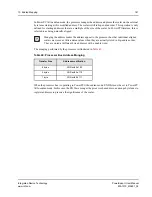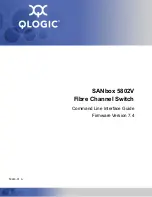
11. Signals and Pinout
193
PowerSpan II User Manual
80A1010_MA001_09
Integrated Device Technology
www.idt.com
PB_BR[1]_
Tristate bidirectional
Hi-Z
Pull-up resistor
Address Bus Request:
This is
an output when an external
arbiter is used and an input when
an internal arbiter is used. As
output it indicates that
PowerSpan II requests the
ownership of the processor
address bus. As input an external
master should assert this signal
to request the ownership of the
processor address bus from
PowerSpan II’s internal arbiter.
This pin must be weakly pulled
high.
PB_BR[2:3]_
Input
Hi-Z
Pull-up resistor
Address Bus Request:
These
are inputs only. They are used by
external masters to request the
processor address bus from the
internal arbiter. These pins must
be weakly pulled high.
PB_CI_
Tristate output
Hi-Z
Pull-up resistor
Cache Inhibit:
It is used for L2
cache control. It indicates
whether the transaction should be
cached or not.
PB_CLK
Input
-
-
Processor Bus Clock:
All
devices intended to interface with
the bus processor side of the
PowerSpan II must be
synchronized to this clock. The
PB_CLK can operate up to 100
MHz.
PB_DBB_
Tristate output
Hi-Z
Pull-up resistor
Data Bus Busy:
Indicates the
ownership of the data bus. The
master who owns the processor
data bus asserts this signal.
Table 55: Processor Bus Signals
Pin Name
Pin Type
Reset State
Recommended
Termination
Description
















































